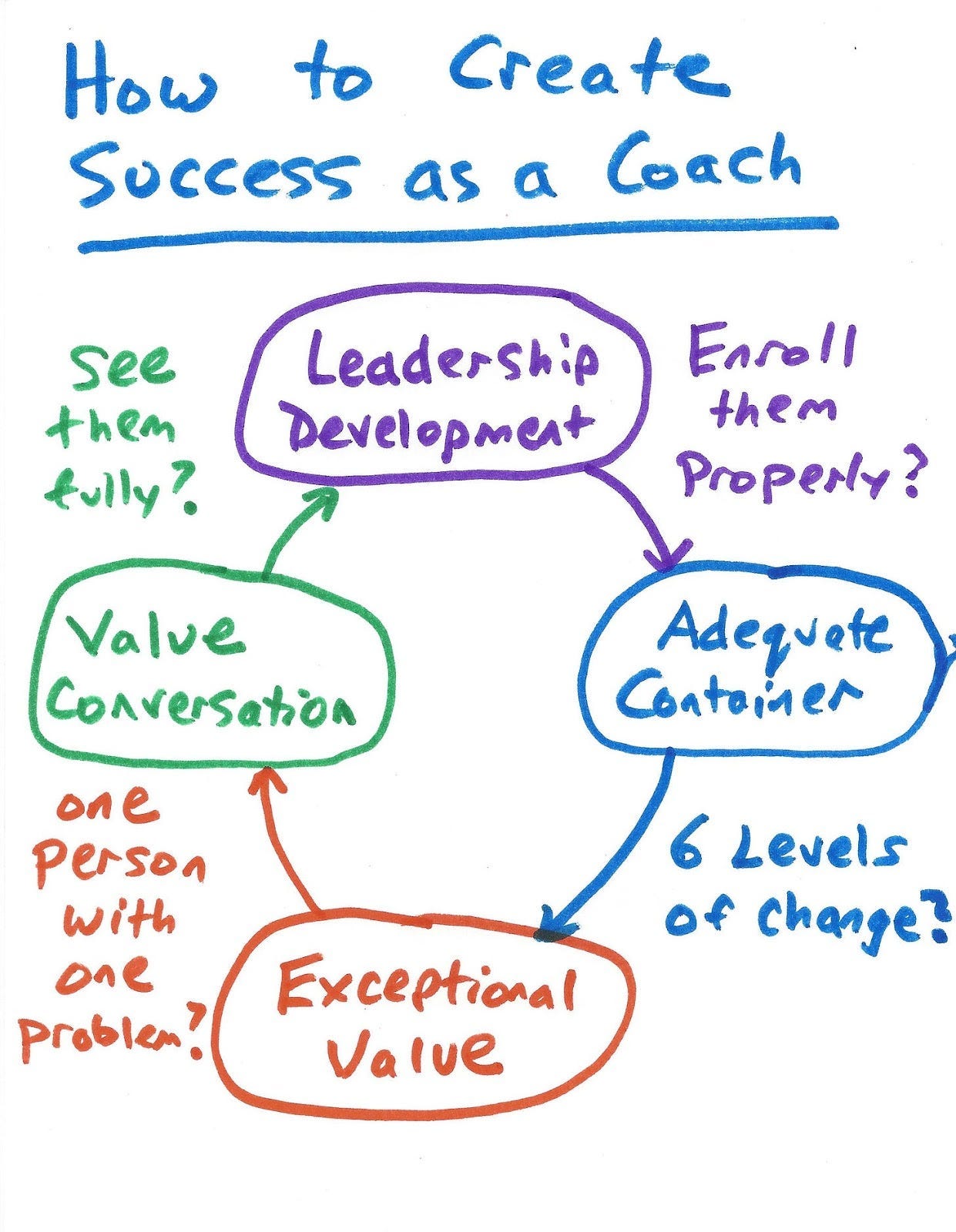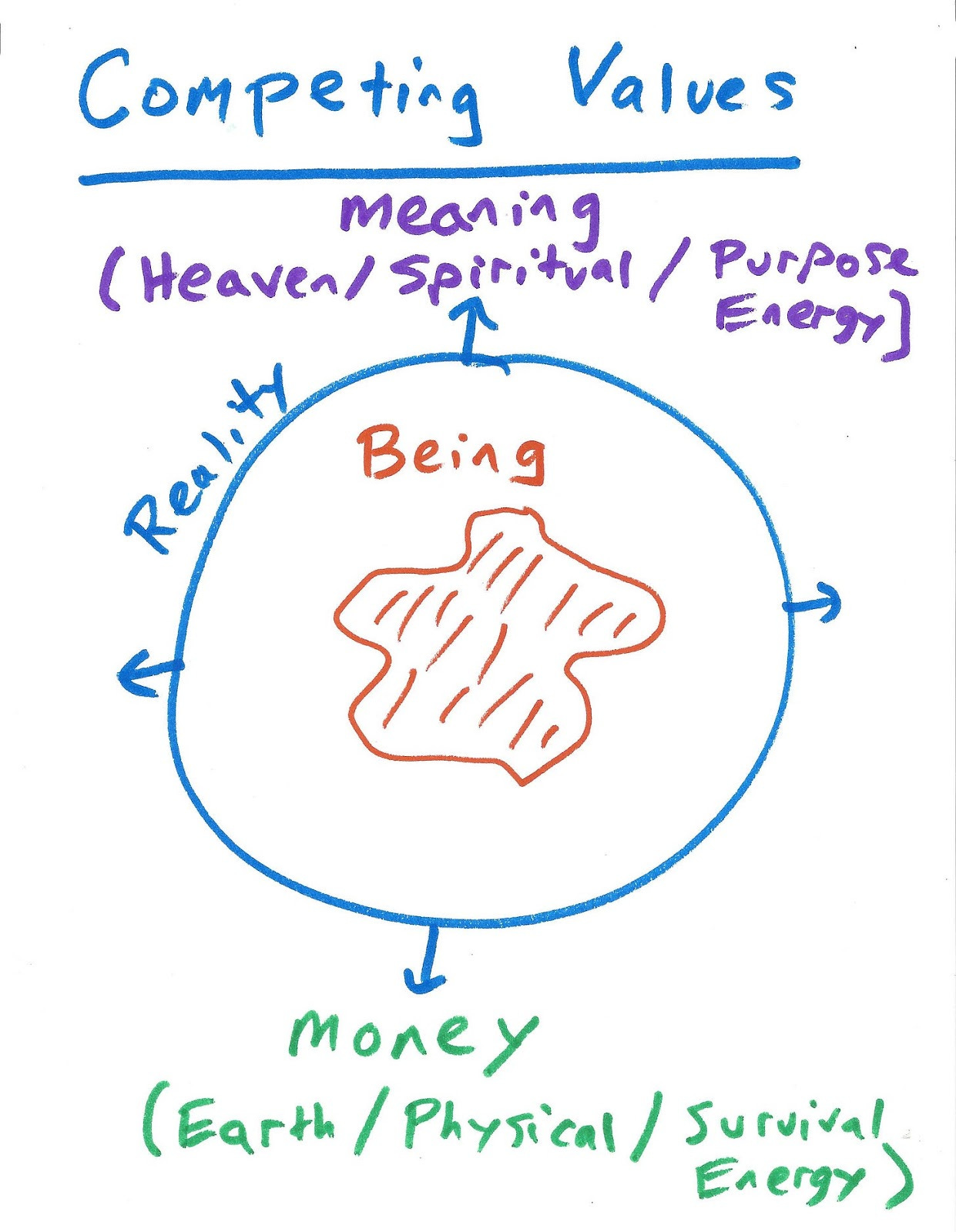Four Steps to Thriving as a Coach
Brian Whetten condenses 20 years of insights into 80 minutes.
[This article has a 3/10 Woo Rating]
My conversation last year with founder and coach Brian Whetten was one of the more insightful discussions I've had. This was reflected in both the feedback and the number of listeners we drew.
Brian and I sat down for two more in-depth conversations. The first explores how to make money with integrity as a coach. The second is a broader discussion of what “authentic leadership” looks like.
Why is Brian worth listening to on these topics? He got a Berkeley PhD in computer science, was a successful Silicon Valley founder, and burned out twice, all by thirty. His own acute trauma then led him into six years of full-time training, coaching, counseling and a master's in spiritual psychology. In the 20 years since, he’s become one of the most senior executive coaches in the country and he makes an extremely comfortable living doing so. His engineer's brain is also able to illustrate profound concepts in simple terms I can understand.
I recently wrote a call for the foundation of more wisdom communities. I’ve subsequently had rather a lot of people ask me how to start one. Having spent the last few weeks reflecting on Brian’s insights in this new interview, I realised they also provide many answers to that question.
Once again, Brian broke out the crayons to illustrate his insights (Listen on Spotify or Apple Podcasts. The video versions have the slides).
Two Problems With Coaching
Whether through spiritual practice or psychedelics, we are currently seeing an unprecedented explosion of “conventionally successful and intelligent” people becoming more interested in the evolution of consciousness. This is (mostly) a good thing!
The pursuit of wisdom might just be the most important process of our lives. It makes us more effective and loving. And the right person can play a pivotal role in helping us overcome developmental obstacles on that path.
The first thought for a previously-successful person discovering spirituality is often that they should become teachers or “life coaches” and help others in their transition. But there are two problems: first, what is this thing called “coaching” anyway? The term has become so broad, and the field so diverse, that it’s hard for me, at least, to understand what it’s describing.
Then the second problem is: how do you provide value, and build a successful business, while operating in full integrity? Looking around, I’ve met a lot of coaches who have a high level of integrity but not a lot of financial success, and a lot of coaches who are creating financial success, but don’t seem to be operating with a high level of integrity. I haven’t met that many who are doing both.
In this interview, Brian and I explored both these problems.
What Is Coaching?
There are two types of problems: Learning Problems and Developmental Problems. If you think of your capacity for understanding as a cup, and knowledge as the water in that cup, a Learning Problem can be solved by finding the right water and pouring it in the cup. A Developmental Problem requires growing the cup, before the answer will fit.
Perhaps the single most valuable thing that effective coaches do is to help their clients with developmental problems: ones that willpower, intelligence or ChatGPT can’t solve. Because it’s a limitation of your personal awareness, it can be hard to see why you’ve hit the wall. Instead it’s commonly reflected in the breakdown of your personal or professional relationships. Or you simply lose your vitality without understanding why. Brian calls this a “beach ball problem,” because no matter how many times you try to shove it under the water, it always finds a way to bubble back up to the surface. We aren’t all lucky enough to have friends, mentors or colleagues that can help. Without getting the right support, these problems just hang around, getting worse and worse.
The Four Step Flywheel
Resolving developmental problems is incredibly valuable, both professionally and personally. Developing the capacity to do so opens the door to creating a successful coaching business. This allows you to make a significant positive impact and a good income with full integrity. Doing so requires mastering four steps. These operate like a flywheel, where one feeds on the other, and they build up increasing momentum over time.
All of them are pretty much the opposite of the conventional wisdom for the industry.
1. “Who is one person, with one problem you feel called to serve?”
The coaching-industrial-complex can resemble a Ponzi scheme that sometimes seems to make most of its money selling dubious accreditations to other coaches. The high sunk cost of these programmes mean that new coaches often feel anchored to a particular modality as “the only true path.” Successful professionals used to jumping through the right hoops in life, get these accreditations, design their website and wait for the fish to jump into the net. They rarely do.
Brian compares our purpose energy (desire to do meaningful work) to electricity swirling in a thundercloud. But lightning doesn’t just strike randomly from above. Instead, it initiates from the earth—from a single point, like a tree or building, that sends an electrical path upward. Once that connection is made, the lightning follows that path back down with full force.
The first nudge of the flywheel to get started as a coach is to find one person with one problem who you feel called to serve.
A good place to start involves diagnosing a problem you’ve solved yourself. Ideally someone with this problem finds you first. Or if you’re writing or designing content, these are the people you want to be targeting when you first get started. You can reach them by telling the story of how you diagnosed and solved your own problem. The same principle also applies when vetting a coach: ask them how many people they have helped in similar circumstances.
More successful people than ever before have had spontaneous or psychedelic-assisted awakening experiences. This creates sudden increases in awareness, but without equivalent integration and development. As coaches, these people may have sufficient awareness to diagnose your problem, but have no idea how to actually fix it because they haven’t fixed it in themselves yet. Brian believes one of the master skills of coaching is accurately and honestly discerning who you can actually help.
2. Having Value Conversations
One of Brian’s most valuable distinctions is between proving worth and providing value. The Instagram coach can be drawn into an arms race of proving they or their modality is somehow superior to competing offerings. This is proving worth. It’s a heady, agitated and insecure kind of communication. It’s the energy of a promotional LinkedIn post.
In contrast, providing value is opening up a 1:1 conversation with the client about what they want from the container, then seeing if you can catalyse that outcome together. This means having a dauntingly open conversation about your mutual expectations before any engagement.
Making money from coaching shouldn’t feel like a betrayal of meaning, instead, it should be a direct reflection of the real-world value you help create. Once you’ve successfully diagnosed the client’s problem, you can then ask: “What would solving this problem be worth to you?”
This isn’t a simple question, because the deeper the change is you’re helping someone make, the more value that change would have, but the harder it can be to measure that value. That’s why it’s not a “value pitch”. It’s a value conversation. It’s an honest exploration of the changes they would want to make and the value that this would have for them.
How do you know you’re in the presence of a client that’s probably too powerful for your current capabilities? One great sign is that you find yourself shifting from a loving curiosity to a desire to show off and prove worth.
3. Mastering the Art of Enrollment
Once most coaches have taken the time to diagnose a client’s problems and establish value, the temptation is to sign the client up for a package of sessions immediately. Once again, Brian challenges that conventional approach.
Brian believes enrollment is where coaches should focus the majority of their efforts. One of Brian’s most resonant insights from our previous conversation was that 10% of the value of any transformational “container” comes from the coach’s expertise, 30% from the relationship between coach and client and 60% from the commitment the client brings to the relationship.
This is why Brian thinks enrollment should ideally take as much as 10-20 hours per client. This happens before money has changed hands. Obviously this is something of a sliding scale based on the number of clients you have and how much you’re able to charge them. But ensuring financial and energetic commitment in advance is critical. Avoiding the temptation to take the money too early from the wrong client is especially hard when you’re starting out. This means that one of the key determinants of coaching success is having some other source of income to rely on as you are getting going.
There are six stages to the transformational process (explained in more detail in our conversation), and the first five happen during the enrollment process. As you master the ability to guide potential clients through these stages, it both gives you the ability to qualify how good a fit the relationship is, and it builds the container for the rest of your work together. Then once the client is ready to commit, and the first check is written, the transformation has already begun.
4. Creating an Adequate Container
Of those six stages of change, perhaps the most important piece is the process of diagnosing people’s problems. There are six levels where a problem can be “stuck” at. Learning what those levels are, and how to diagnose each one, is foundational to creating consistently high levels of value over time.
The deepest of these levels are “seeing” and “being” - the awareness and development a person holds in a given area. To be able to see a client’s problem accurately, the coach’s “beingness” has to be larger than the client’s “seeingness.” And this is something you continue to develop over time. It’s part of the fourth step of the flywheel, which then creates the capacity to deliver more value, which invites you into bigger value conversations, which then require more powerful enrollment conversations.
Integrating Money and Meaning
The last twenty minutes of our conversation tackles the core issue of money and meaning. This is because I think money is at the heart of most personal dilemmas I’ve encountered. It’s also an unusually pertinient problem for most professional coaches. For many of us, meaning and money are competing values. So Brian believes most people sort them into two different buckets where their professional life and personal life meet each need separately. For an increasingly large number of people that tension is getting harder to manage. And if you’re seeking to become successful as a coach, where you get paid for doing purpose driven work, integrating this tension is essential. You can’t be successful without it. Brian walks through the key steps for how to do so, at the end of our talk.
As Brian explains in more detail, when you have two of your values in competition your individual “beingness” needs to expand to contain both. This means your personal container needs to be able to expand.1 And that involves confrontation with your shadow. This is a hangup or blockage you sometimes aren’t even aware you have. So shadow work is a tricky process that can involve endless second-guessing and paralysing introspection. It’s very hard to do it without somebody else as a mirror, ideally someone that can see your issues with greater clarity than you can.
Brian has a brilliantly simple method for identifying where your shadow blocks are. My genre is curiosity: the guidance of your consciousness by a benevolent relational force. But I recall the start of my own journey when I couldn’t even access the felt-sense of what I was passionate about. Brian addresses this problem by inverting it with his “Yes, Yes, Hell No!” framing (and excellent book of the same name). If you don’t know what you’re running towards, pay attention to what you’re running away from:
The surest way to make a great decision is to look for the choice that evokes these three internal responses: the voice of intuition lights up, the voice of reason checks it out and approves it, and the voice of fear says, “Hell No! Run away!”
You don’t have to fight all the dragons, just the big scary one specifically blocking your path (which is often money-related). To make that abstract concept tangible, charging money for coaching is an incredibly effective way to reveal shadow in the coach themselves. Imagine putting a dollar value on your time, offering it out to people and having them reject it. A coach with shadow around money will both struggle to make money and help their clients with their own money issues.
A good coach is your companion in shadow work. Like a loving parent, they’ll turn on the closet light and show you there are no monsters there. Brian believes “making friends with your fears” is a revolutionary tool to facilitate that process (he’s made it available for free, and I have written about it here).
Because it’s a deliberate confrontation with non-rational fears, a “Yes, Yes, Hell No!” decision tends to result in you encountering your shadow. Resolving that shadow increases your awareness and the “size of your container.” As a coach, this expansion makes you more valuable to clients. As you become more aware, you can diagnose a wider array of developmental blocks, including bigger problems for more powerful people. This allows you to charge more money, which resolves more shadow about money and so on. If I were personally looking for someone to coach me on how to make money with integrity, I would look for a coach that was already doing it at scale!
Grounding the hard questions
By inverting a lot of traditional wisdom, Brian offers some concrete suggestions for coaching’s trickiest questions:
How do I create a huge social media following and a broad offering? => Find one person with one problem who you feel called to serve.
How do I prove my worth to strangers? => Openly ask questions and talk about the value you can create.
How do I get clients to sign up quickly? => Slow down and get enrollment right, then let the power of mutual commitment do the work.
How do I grow my practice? => Grow your individual awareness which allows you to diagnose a wider array of problems and offer more value.
How do I help clients find their passion? => Get them to identify and make friends with their “Yes, Yes Hell No!” fears.
Join us soon for part 2 on the path of authentic leadership.





That’s an amazing piece.
My takeaways:
- keep your job until you have enough clients
- focus on a problem you’ve solved for yourself *
* in my case: learning how to be with myself 🌱
So glad I came across your work yesterday. This post is just what I need as I continue to grow my coaching practice. Can't wait to listen!